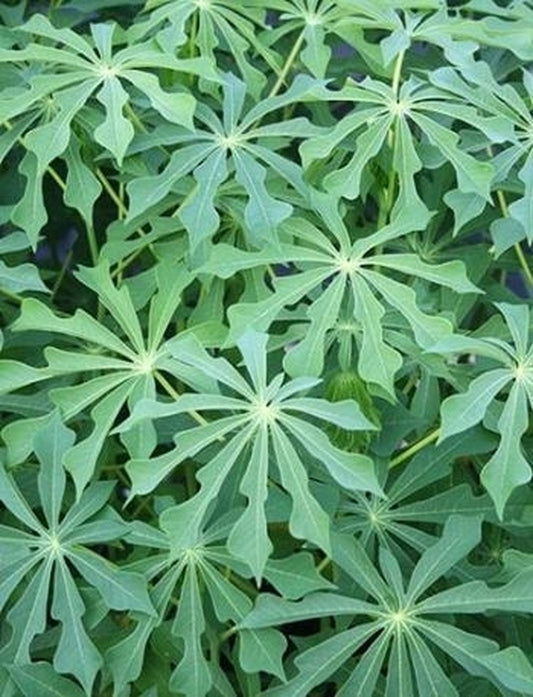Manihot prefers to grow in full sun but is otherwise flexible about its environment and grows as well in containers as it does in the garden. Try pairing the bold leaves of Manihot with musa, canna, or hedychium.
-
Manihot grahamii
Item #: 4164
Zones: 7b to 10b
Dormancy: Winter
Height: 120" tall
Culture: Sun to Light Shade
Origin: Argentina, Brazil, Paraguay, Uruguay
Pot Size: 3.5" pot (24 fl. oz/0.7 L)
Regular price $27.00Regular priceUnit price per
More Information About Manihot
The genus Manihot is normally restricted to the tropics, but we have acquired some hardy selections for the Southeast. Manihot contains around 100 species and is native from Arizona to Argentina.
Manihot esculenta (aka cassava) whose starchy roots when boiled, make tapioca, is a staple food in the tropics. This and other manihot species also have ornamental value as large sub-shrubs that produce large, deeply-lobed leaves that impart a distinct tropical feel to the garden. At the northern end of their range, manihot dies back to the ground each year and acts more like an herbaceous perennial.
Manihot Growing Tips
Manihot prefers to grow in full sun but is otherwise fairly flexible about its environment and grows as well in containers as it does in the garden. Try combining the bold leaves of manihot with Musa basjoo, canna, hedychium, curcuma, brugmansia or other large tropicals. Do not try to cook and eat manihot roots from your garden. The roots contain large amounts of cyanide which, if not removed by careful preparation, are deadly.


